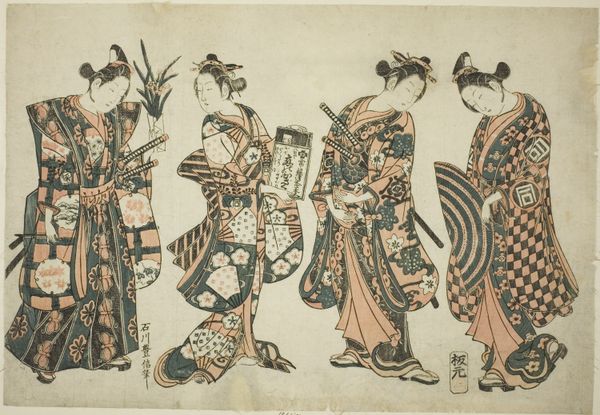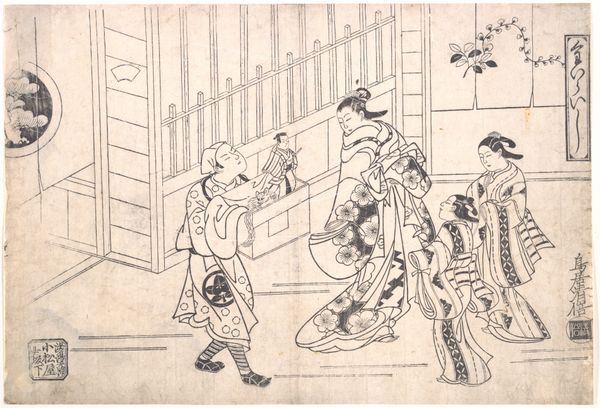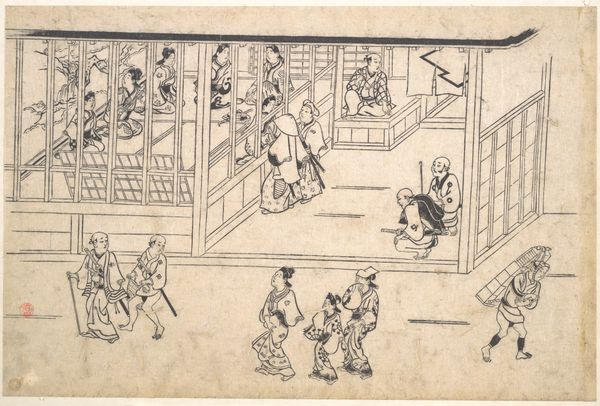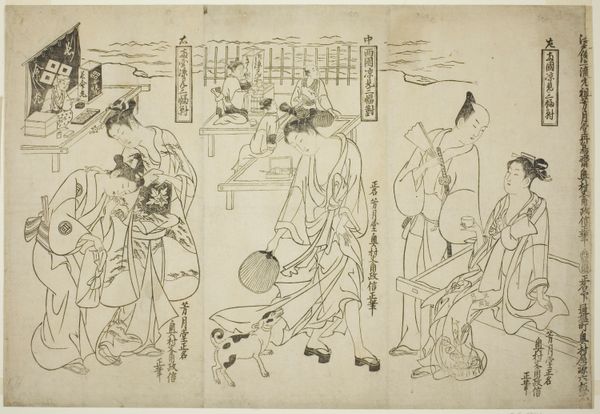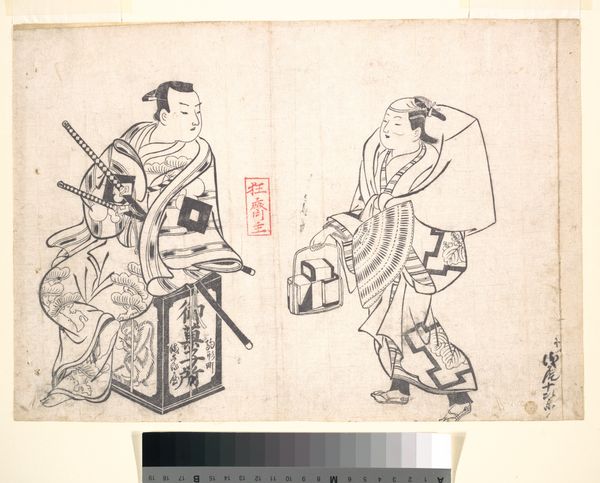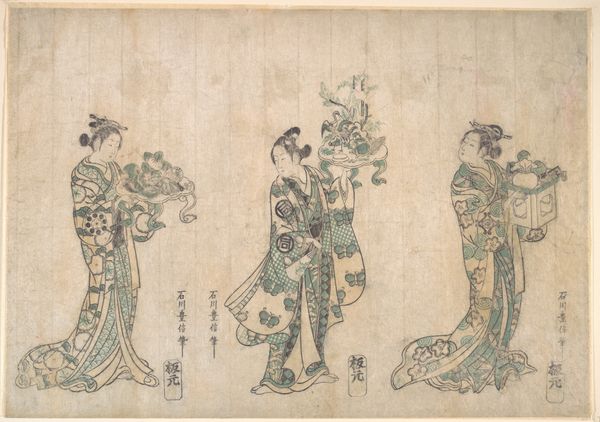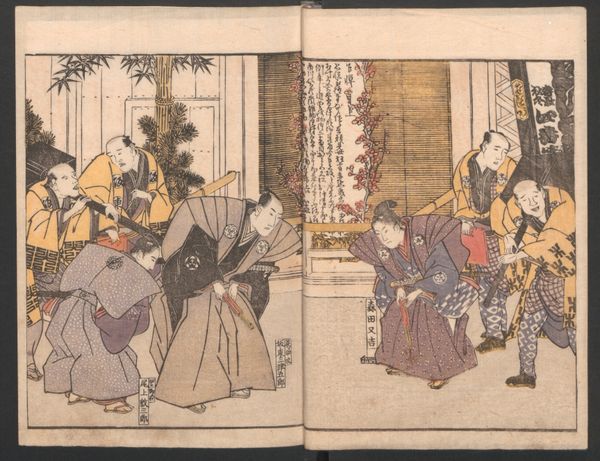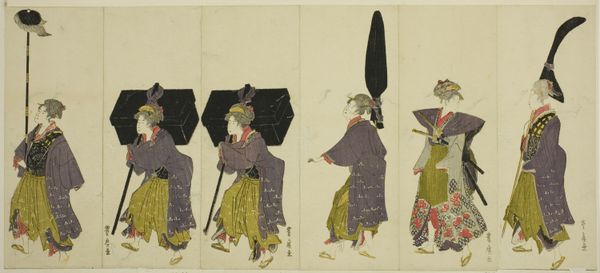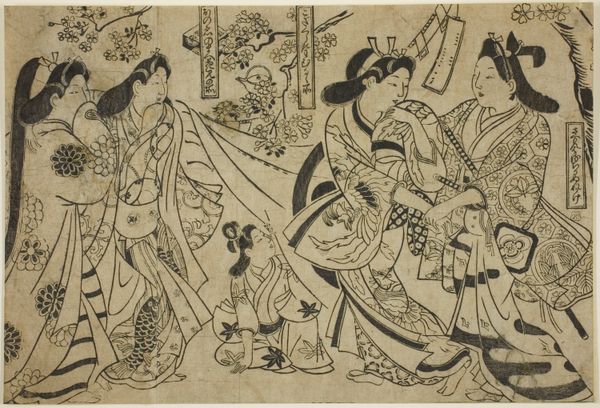
Games of Football Being Played by Nobles 1625 - 1694
0:00
0:00
# print
#
asian-art
#
japan
#
figuration
#
men
#
line
#
genre-painting
Dimensions: H. 5 1/8 in. (13 cm); 8 13/16 in. (22.4 cm)
Copyright: Public Domain
Curator: "Games of Football Being Played by Nobles," a print by Hishikawa Moronobu dating back to between 1625 and 1694. It resides here at the Metropolitan Museum. Editor: My immediate impression is of deliberate restraint. The lines, so precise, almost seem to confine the figures rather than simply define them. There's a certain...stiffness. Curator: Indeed, that's partially a function of the medium—a woodblock print. Moronobu’s mastery lies in using such rigid constraints to depict what would have been, in reality, quite dynamic movements. This piece also offers insight into the social history of sport in Japan. Editor: The composition is strikingly geometric. Vertical lines segment the space, and this grid-like structure contrasts intriguingly with the organic shapes of the figures themselves. The subtle variations in line weight add visual interest, drawing the eye to particular details. Curator: Notice too that despite the work's title suggesting "football," this is not the sport as we know it today. This is likely a representation of Kemari, a form of蹴鞠, which was popular among the nobility during the Heian period and afterwards. It’s a communal and ceremonial game, as much as athletic activity. Editor: Interesting. Focusing on pure form, the composition suggests the players inhabit almost separate, framed worlds. The flat picture plane emphasizes the interplay between positive and negative space, further flattening perspective, in an extremely engaging exercise. The roof element introduces an area of visual contrast, through a latticed pattern; however, it provides another structural frame element, maintaining overall containment of figures and, perhaps, energy. Curator: The very fact that Moronobu chose this subject matter reflects changing social dynamics. During his era, depictions of the aristocracy, particularly engaging in leisurely pursuits, became a subtle form of cultural commentary, reflecting both admiration and a degree of distance, even critique. The print medium democratizes its availability, and therefore, to some extent, brings the lives of the nobles into public discourse. Editor: So, it’s less about the "game" itself and more about its symbolism within a rigid social structure, translated and distilled by formal artistic parameters? It really seems as if the artist is asking what lines define not just visual components but the invisible ones between different members of a group. Curator: Precisely. Through line, form, and subject matter, Moronobu invites reflection on the roles and representations of power. Editor: I leave with an intriguing tension: confinement and social dynamism held in stark balance on one sheet. Curator: And a new appreciation for sport's social tapestry.
Comments
No comments
Be the first to comment and join the conversation on the ultimate creative platform.
